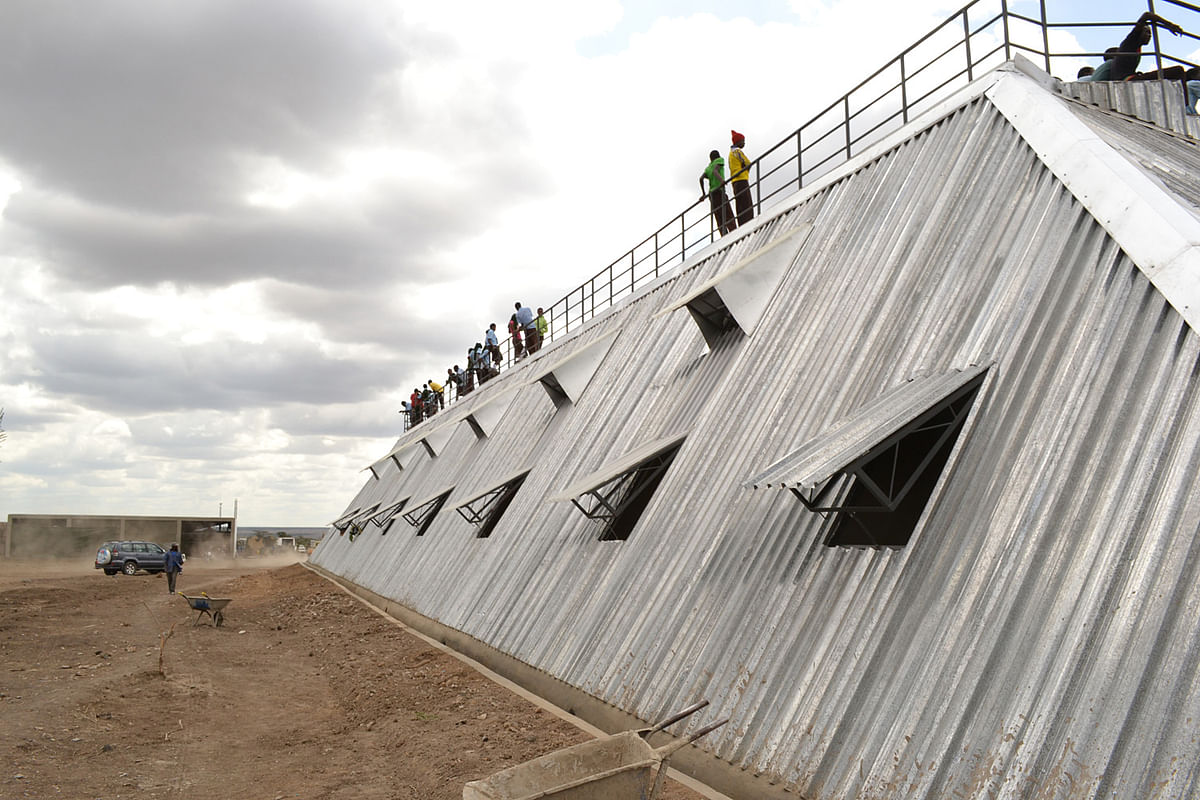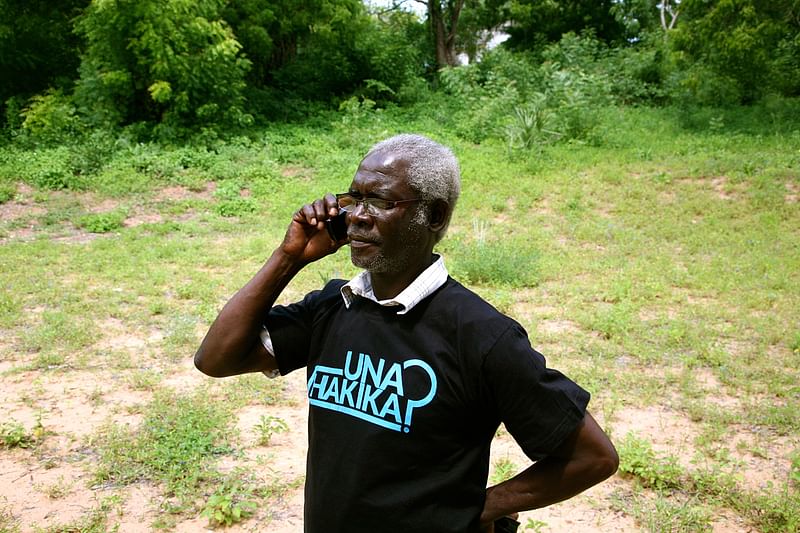
Final six revealed for 2016 Fuller Challenge
By Justine Testado|
Tuesday, Aug 23, 2016
Related
Multi-disciplinary teams from across the globe work hard for a chance to win the $100,000 Fuller Challenge grand prize that will help implement their initiative. Last month, the Buckminster Fuller Institute revealed 19 hopeful initiatives who were shortlisted for the 2016 cycle. Now, that competition pool has narrowed down to the final six.
Each initiative presents a compelling solution to a variety of pressing global issues, so competition is always tough. Over the past few weeks, the expert Review Committee rigorously reviewed each finalist proposal in a multi-stage evaluation process for adherence to entry criteria. In recent years, winners included GreenWave vertical farming, the Living Breakwaters oyster-tecture project, and Ecovative Mushroom Plastics.
This year's winner is expected to be revealed in November.
See which projects made the final cut below!
RELATED COMPETITION 2016 Fuller Challenge Call for Proposals

Waterbank Schools by PITCHAfrica
Project summary: “PITCHAfrica identifies the need for water as a critical global problem, and transforms community dynamics by offering an elegantly simple solution. In a nested way, this design intervention is at once a social, educational, medical, environmental, and economic intervention. The model takes a common architectural form and adds a trimtab: water catchment and filtration systems that transform the use of the structure, makes certain behaviors obsolete, and directly addresses the lack of a critical resource. Embedded in this new model is the understanding that community values are a top priority, from who builds the actual structure to its use for numerous activities.”

CommuniTree by Taking Root
Project summary: “CommuniTree is a simple but practical, well-executed approach to tackling three interlinked problems: deforestation, climate change, and poverty. The project ingenuously connects the dots around CO2 reduction and the generation of sustainable, local economies through a multi-faceted reforestation program. The sale of carbon credits and sustainable wood products serve as financial mechanisms to support widespread reforestation by small, stakeholder farmers in areas vulnerable to the effects of climate change in Nicaragua. Because of the immense acreage of degraded agricultural lands around the world, this approach has the potential to be emulated widely and to contribute greatly to global carbon sequestration, as well as to habitat restoration and poverty alleviation.”

Cooperación Comunitaria
Project summary: “Cooperación Comunitaria is implementing a comprehensive model to radically improve the living conditions of marginalized populations in Mexico by working with communities to rebuild their homes—combining sound geological and engineering risk analysis with local indigenous wisdom. The project leaders engage with local people in the placement, design, and building of affordable, seismically sound, eco-friendly, culturally appropriate dwellings using local materials. In addition to their efforts in the built environment, Cooperación Comunitaria works on education and training programs, sustainable economic development through agroforestry and agro-ecological projects, as well as the revival and revitalization of local indigenous culture, including its herbal and medical traditions. This exemplary, multi-faceted initiative combines science and local traditions in a comprehensive approach community resilience.”

The Rainforest Solutions Project
Project summary: “The Rainforest Solutions Project is a unique and innovative coalition consisting of Greenpeace, Sierra Club BC, and Stand (formermly ForestEthics) and a project of Tides Canada Initiative. For almost 2 decades, they have had a singular mission of “pioneering collaboration between deeply divergent interests (government, First Nations, environmentalists and logging companies) in the Great Bear Rainforest to develop a world-leading legal and process framework called Ecosystem Based Management supported by all the parties.” The decades-long struggle culminated in one of the most extraordinary conservation, social justice, and indigenous rights victories in recent memory: a historic 250-year agreement between the parties to conserve 85% and sustainably manage the 15-million acre Great Bear Rainforest, the largest old growth temperate rainforest on the planet.”

Una Hakika by the Sentinel Project
Project summary: “The Sentinel Project has developed Una Hakika: a hybrid of communications technology, social insight, and beneficial use of social media. The project leverages both online and offline “informational architecture” to de-escalate conflict in regions where misinformation can lead to violence or genocide. Interethnic and inter-communal violence is often dramatically exacerbated by inflammatory rumors. The Una Hakika pilot project quickly and effectively uses all available communication tools--including village councils, mobile phones, radio, print, and one-on-one conversation--to defuse conflict, with projects operating on the ground in both Kenya and Myanmar.”

The Urban Death Project
Project summary: “The Urban Death Project (UDP) has designed a scalable, regenerative death care model based on the natural process of decomposition. In the Recomposition centers that the UDP envisions, bodies and forest waste are composted and transformed into soil. These centers are hybrid public park, funeral home, and memorial space, with the potential to be situated in repurposed urban infrastructure. The Recomposition process eliminates the need for the millions of feet of hardwood, tons of concrete, gallons of toxic embalming fluids, and land required for traditional funerary practices (burial or cremation), while giving back to the earth with nutrient compost. The Urban Death Project’s solution to today’s toxic, $20 billion funeral industry presents a new model of death care that is both human- and nature-centric.”
The finalist projects can be seen in more detail here.

RELATED NEWS Nineteen 2016 Fuller Challenge semi-finalists revealed

RELATED NEWS "GreenWave" wins the 2015 Buckminster Fuller Challenge

RELATED NEWS Living Breakwaters wins 2014 Buckminster Fuller Challenge


Share
0 Comments
Comment as :